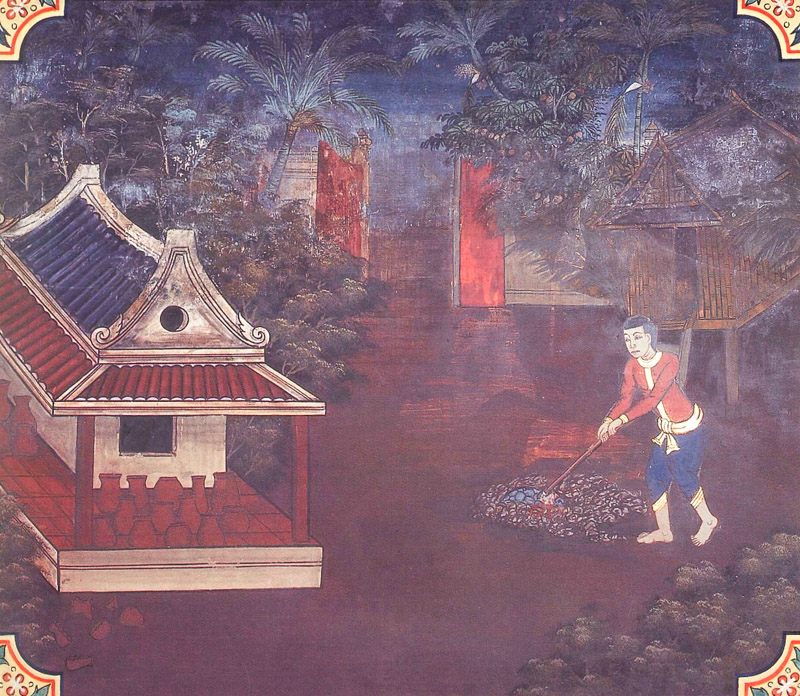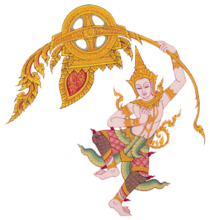
The Bodhisatta was once a potter. The lake where the Bodhisatta got his clay was connected to a river during the rainy season, but when the water receded in the hot season, the lake and river split off from each other. Fish and turtles have mystical knowledge of the weather, and knowing a drought was coming they swam into the river; except for one stubborn turtle who did not want to leave the place where he was born. When the lake dried up, he dug a hole and buried himself in the mud to wait for the rains to return.
One day, when the Bodhisatta came to get clay, he dug his spade into the soil and cracked the turtle’s shell. The turtle, dying in agony, told the Bodhisatta that he regretted staying behind when all the had others left. The Bodhisatta took the dead turtle back to the village and told the residents how and why he met his demise, explaining the peril of cravings and desires. He preached with the skill of a Buddha, and not only did his neighbors accept the advice, but people retold his lesson across the whole of India for seven thousand years.
In the Lifetime of the Buddha
A disease broke out in a family’s home and the parents told their son to make a hole in the wall of their home (so he would not be seen coming out the door by the spirits causing the disease) and escape to safety. When the disease had run its course, the son returned to the now-empty home and dug up the family treasure to start a new life. One day he took offerings to the Buddha, and when he told him how he had escaped death, the Buddha told this story so the son knew he had done a wise thing.
The turtle was an earlier birth of Ananda, one of the Buddha’s top disciples.
